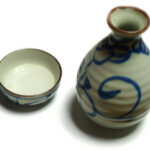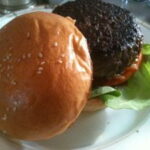How do you pick the most noteworthy from the thousands of famous and infamous Philadelphians? For the sake of brevity, I’ll limit my list to a dozen or so of my own choices. I’ll attempt to be fair and list just a few of those who made Philadelphians proud. Born and educated in the City of Brotherly Love, I consider myself somewhat of an authority, at least on the famous oldtimers.
However, since I am somewhat elderly and a stick-in-the-mud traditionalist, I won’t include any of Philly’s well-known criminals, politicians, sports heroes or rock stars. That could be the task of a much younger writer who wouldn’t want to consider any Philly heroes who lived before the 1990s.
Benjamin Franklin
Therefore, I start my list with my favorite, Ben Franklin (1706-1790). Although born in Boston, Ben came to town as a teenager and the rest is history. You can’t wander anywhere in the city today without seeing his name: the Franklin Parkway, the Franklin gravesite, the Franklin House, the Franklin Institute, the Franklin statue at the University of Pennsylvania, Franklin Street in North Philly and a bunch of stores and businesses with Franklin in their names.
In addition to his career as a printer, pamphleteer, a signer of the Declaration of Independence, diplomat and lover of royal French ladies, he was also a prolific scientist. Along with the Franklin stove, his many inventions include bifocals, the lightning rod (remember his kite flying act?), the medical catheter and the rocking chair. He also founded the first American public library, which today, of course, is on the Franklin Parkway.
When most school kids think of Philadelphia history, the name of BETSY ROSS (1752-1836) always pops up. In their little minds is the picture of prim and proper maiden lady Betsy sewing the very first stars and stripes flag as General Washington hovers above her. Actually this may be perfectly true, because the Rosses were close pals with Washington when he was in town during the Revolutionary War, sat in the pew next to the General in Christ’s Church, and afterward saw him frequently when his duties as the first President took him to Philadelphia.
Despite the legends, Betsy was no little old seamstress at the time. She was in her mid-twenties, a successful businesswoman who made custom furniture with her first husband, John Ross. Betsy Griscom Ross was born a Quaker, but angered her family when she eloped with Anglican John Ross. After Ross was killed at the beginning of the Revolutionary War, General Washington called on the widow with a drawing of the suggested flag for the new nation. According to legend, she made several changes and created the very first 13 stars and 13 stripes American flag. Not many people know it, but her major business for the next half century, and into her 80s, was making flags from her little Philadelphia home for the military, maritime ships and state houses.
Betsy married again in 1777 to Joseph Ashburn, a sea captain and gun runner for the rebels. He was captured by the British and died in England in 1782. The twice widowed Betsy married #3, John Claypool, the next year. During her marriages, Betsy gave birth to six daughters, and four lived to adulthood.
THE BARRYMORES
ETHEL: Although their names are not as famous today, for the first half of the 20th Century, Philadelphia-born Ethel (1879-1959), Lionel (1878-1954) and John Barrymore (1882-1942) were super-celebrities of American theater and film. Coming from a famous theatrical family that was already well established for 50 years before the eldest, Ethel sibling, was born in Philadelphia. Her grandmother, Louise Lane Drew, was not only an established actress, but also owned and managed Philadelphia’s Arch Street Theater.
Legends have it that the three most well-known Barrymores, Ethel, Lionel and John, were actually born in the traditional trunk. They did spend their baby years backstage in the family’s Philadelphia theater and in theaters on the road while their grandmother, Louise, and later their mother, Georgiana Drew Barrymore, performed out front in plays and vaudeville.
While the movies of the Barrymores still show up in film festivals and on late-night TV, all three siblings divided their times between Hollywood and the New York theater. The only movie the three made together was “Rasputin and the Empress” in 1932. Ethel won the Academy Award for “None But The Lonely Heart” in 1944. Ethel’s most well-known stage appearance was in “The Corn Is Green” in 1942, later made as a movie starring Bette Davis. The Ethel Barrymore Theater on Broadway carries her name today.
LIONEL: Ethel’s brother, Lionel, didn’t start out to be an actor. He studied art in Paris, but after several starving years, his Barrymore heritage took him to the stage. He had a raspy voice, which was an advantage later in his movie acting, but kept him in small parts on the stage, so he headed out to the new little town of Hollywood in 1912 to act in silent movies. He did dozens of one-reelers for D.W. Griffith and others, usually in heavy villain make-up, but finally got a hero’s part with brother, John, in the classic “Peter Ibbetson” in 1917. When talkies arrived in the late 1920s, gravel-voiced Lionel found his niche, usually as a cantankerous old skinflint. He won an Academy Award in 1931 for his performance as a hard-nosed lawyer in “A Free Soul”. He made a series of “Dr. Kildare” movies in the 1930s and 1940s, as well as many others, including “Grand Hotel” (with brother John), “Duel In The Sun”, “You Can’t Take It With You” and “Key Largo”, and may be best remembered as the villainous, growling banker in “It’s A Wonderful Life.
JOHN: According to most movie and stage historians, John was the best known Barrymore. He did a series of highly-successful stage performances, including many memorable Shakespeare roles, including “Hamlet” and “Richard III”. He was a popular movie actor, particularly in the 1930s after talkies came in. His effective voice, classic good looks and stage training made him a natural for movie stardom. Among his films were “Topaz”, “Twentieth Century”, “Grand Hotel” and “Romeo and Juliet”. However, by the late 1930s, John had become an alcoholic, and he ended his career playing parodies of his boozy self.
JOHN, JR., AND DREW: Although never associated with Philadelphia, his son, John, Jr., (1932-2004) had a short Hollywood career, but it fizzled out because of his own alcoholism. His daughter, Drew (1975-), granddaughter of John, has had considerably more success in movies than anyone else in the Barrymore family. She starred in “E.T.” at age six, and has performed in major films since. Now a prominent actress -producer, she was an executive for the remake film of the old TV series, “Charlie’s Angels” in 2000.
GEORGE MC CLELLAN
General George McClellan (1826-1885) was born in Philadelphia and briefly attended the University of Pennsylvania before his appointment to West Point. Immediately upon graduation in 1846, McClellan served in the Mexican War, and because of bravery under fire was promoted to captain. He later studied in Europe and learned much of his military expertise observing the English and Prussian armies in combat. Unsatisfied with Army life, he resigned in 1857 and became a railroad executive. When the Civil War broke out in 1861, he was promoted to major general of Ohio Volunteers. After gaining a reputation for chasing irregular Confederate raiders out of the state, he was brought to Washington to serve under
the then senior general, Winfield Scott.
When the North suffered defeats in the First Battle of Bull Run and other battles, the aging Scott was retired by President Lincoln, and McClellan was promoted to full general in charge of all Union forces. However, instead of taking aggressive action, he spent the rest of 1861 and early 1862 training troops and making grandiose statements about what he intended to do. In exasperation, Lincoln sent him a dispatch with words similar to: “If you have no plans for the Army, I can find use for it.” McClellan, called “The Little Napoleon” by his disgusted troops, was fired by the President in March 1862.
Blaming Lincoln and other officials for his failures, the bitter McClellan resigned from the Army and ran for President as a Democrat against Republican Lincoln in 1864. He was soundly defeated. As a civilian, he served as a railroad executive again and was the governor of New Jersey from 1878 to 1882.
How could we forget Billy Penn (1644-1718), the man whose statue stands proudly above Philadelphia’s City Hall? And the state isn’t called Pennsylvania by accident. English-born Penn converted to Quakerism when he was a student at Oxford. At that time, the sect was persecuted in England, and Penn spent his inheritance from his father to buy lands in the area where the state of Pennsylvania is today. He wanted his fellow English religionists to come there to practice their religion in their own way.
He planned and named the city of Philadelphia, which is still known as the Quaker City. He returned to England and convinced the king to release all Quaker prisoners, and the colony thrived with more than a thousand new settlers in 1698. However, when Penn returned to England again to recruit more Quakers, he was charged with treason. He escaped punishment and returned to his colony to serve as governor. Once again, in 1701 he went back to England to claim his remaining estates, but found his attorney had absconded with all his money. Penn briefly went to debtor’s prison, but his friends paid for his release. He died broke and in poor health at age 74.
There are many, many others who call the City of Brotherly Love their place of birth, including actors Grace Kelly, Bill Cosby, Will Smith and Peter Boyle. Also, great singers Marion Anderson, Pearl Bailey and Paul Robeson. Sylvester Stallone, who played Rocky the Philly fighter, was born in New York City, as any Philadelphian ear could discern from the actor’s annoying Noo Yawk accent. And the last native Philadelphian on my list is the comedian and champion drinker, W.C. Fields, who asked that the inscription on his tombstone should be, “Here lies W.C. Fields. I would rather be living in Philadelphia.”






